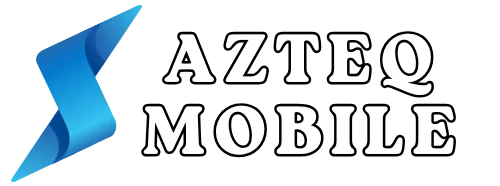In a world where students can learn algebra from a robot and teachers can grade papers with a click, the EdTech ecosystem is nothing short of a digital playground. This vibrant landscape is bursting with innovative tools and resources designed to make learning as engaging as binge-watching the latest hit series. Gone are the days of dusty textbooks and chalk-stained hands—today’s classrooms are powered by cutting-edge technology and a sprinkle of creativity.
Table of Contents
ToggleOverview of the EdTech Ecosystem
The EdTech ecosystem comprises various stakeholders that influence the educational landscape. Key players include educational institutions, technology developers, content creators, and learners. Each group plays a crucial role in shaping how technology integrates into education.
Innovative companies produce software and hardware designed for learning environments. These developers focus on user-friendly solutions that engage students. Additionally, content creators craft interactive learning materials that resonate with diverse learners.
Educational institutions implement EdTech solutions to enhance teaching methods. Schools and universities serve as testing grounds for new technologies, fostering an environment ripe for innovation. Professional development programs equip educators with the skills to utilize these tools effectively.
Learners experience enhanced engagement through interactive platforms. They benefit from personalized learning experiences tailored to individual needs. Accessibility features ensure that all students can participate, regardless of their background or abilities.
Investment in EdTech has surged in recent years, reflecting its growing importance. In 2020 alone, global investment reached approximately $16.1 billion. This trend signals a shift toward technology-driven education solutions that prioritize flexibility and adaptability.
Collaboration among stakeholders strengthens the EdTech ecosystem. Partnerships between educators and technology firms create feedback loops that drive continuous improvement. Shared knowledge among entities fosters innovation and ensures alignment with educational goals.
Overall, the EdTech ecosystem continues to evolve, driven by advancements in technology and increasing demand for innovative learning solutions. This dynamic landscape promises ongoing changes that enhance the educational experience for students worldwide.
Key Components of the EdTech Ecosystem

The EdTech ecosystem involves a variety of components that contribute to its dynamic nature. Each element plays a significant role in enhancing educational experiences and driving innovation.
Technology Providers
Technology providers create essential tools for educational contexts. They offer user-friendly software and hardware, which educators and learners use. Companies in this space focus on solutions that promote engagement and streamline the learning process. For instance, platforms like Google Classroom and Microsoft Teams enable collaborative learning environments. In 2020, the EdTech sector attracted around $16.1 billion in investments, indicating strong support for these technological advancements. Their continuous innovation shapes how students interact with content.
Educational Institutions
Educational institutions serve as focal points in the EdTech ecosystem. They implement technologies designed to improve teaching methods and facilitate learning. By adopting EdTech solutions, these institutions create engaging classroom environments that reflect modern educational needs. Often, schools experiment with new tools, providing valuable feedback to developers. Professional development programs for educators enhance their capabilities in leveraging technology effectively. Together, these efforts support diverse learner needs and improve educational outcomes.
Policymakers
Policymakers influence the EdTech landscape through legislation and funding initiatives. Their decisions shape how schools integrate technology into curricula and ensure equitable access to educational resources. New policies promote innovation and growth within the EdTech ecosystem. Collaboration with educational institutions and technology providers fosters environments conducive to implementing effective solutions. These policymakers prioritize the allocation of resources to ensure that all students benefit from technological advancements, driving the evolution toward more inclusive educational practices.
Trends Shaping the EdTech Ecosystem
The EdTech ecosystem is experiencing rapid change driven by innovative trends in technology and pedagogy. Stakeholders continually adapt to these trends, enhancing learning experiences.
Emerging Technologies
Artificial intelligence, virtual reality, and augmented reality are notable emerging technologies shaping EdTech. AI personalizes learning experiences by analyzing student data to tailor content. Virtual reality immerses students in interactive environments, making complex subjects easier to grasp. Augmented reality enhances traditional resources by overlaying digital information onto the real world, increasing engagement. Additionally, machine learning algorithms offer adaptive learning paths, providing real-time feedback on student performance. These technologies are not just enhancing the learning experience; they are revolutionizing how educational content is delivered and consumed.
Learner-Centric Approaches
Learner-centric approaches place students at the heart of education. Personalized learning, which caters to individual needs, drives engagement and motivation. Collaborative learning fosters teamwork, allowing students to share knowledge and skills. Gamification introduces elements of play into learning, making education enjoyable and interactive. Flexibility in learning environments accommodates diverse learning styles and paces. Educators increasingly focus on social-emotional learning, addressing the overall well-being of students. This shift encourages active participation and responsibility for learning, making education more relevant and appealing.
Challenges in the EdTech Ecosystem
The EdTech ecosystem faces several challenges that could hinder its growth and effectiveness. Addressing these concerns is critical for maximizing the impact of technology in education.
Accessibility Issues
Accessibility remains a major hurdle for the EdTech ecosystem. Many students experience barriers that prevent them from fully engaging with digital learning resources. Tools may not accommodate diverse learning needs, limiting access for individuals with disabilities. Connectivity issues in rural areas also restrict opportunities for learners. Technology developers must prioritize creating inclusive platforms that cater to all students. Collaboration between schools and EdTech companies can help overcome these obstacles and promote equal access to educational resources.
Data Privacy Concerns
Data privacy concerns pose significant challenges within the EdTech ecosystem. As the reliance on technology increases, so does the collection of personal information from students. Protecting this sensitive data is paramount to maintaining trust between educators, students, and technology providers. Regulatory measures must be in place to ensure compliance with privacy laws, such as FERPA and COPPA. Transparency in data usage practices can help alleviate concerns, fostering a secure learning environment. Stakeholders should prioritize robust data protection strategies to safeguard learners while enhancing educational experiences.
Future Outlook for the EdTech Ecosystem
Growth characterizes the future of the EdTech ecosystem, driven by both technological advancements and shifting educational needs. Emerging technologies such as artificial intelligence, virtual reality, and augmented reality promise to further reshape learning environments, making content delivery more immersive and personalized. Investment trends indicate confidence in this sector, with global funding expected to continue rising beyond the $16.1 billion recorded in 2020.
Personalization will remain a priority, as educational tools must adapt to individual learning styles. Learning platforms will likely incorporate adaptive learning algorithms to provide tailored experiences for students. These advancements ensure that engagement remains high, fostering deeper connections between learners and content.
Collaboration among stakeholders such as educators, technology developers, and policymakers becomes increasingly vital. Partnerships can facilitate the development of resources that support diverse learners. Educational institutions are positioned to be testing grounds for innovative technologies, allowing developers to receive real-world feedback and refine their products.
Accessibility must also be a focal point as the ecosystem evolves. Strategies to overcome barriers for marginalized students will influence technology design and implementation. Inclusivity initiatives will promote equal access to educational resources, ensuring that every student can benefit from technological advancements.
Privacy concerns will remain a significant issue as reliance on technology increases. Stakeholders must implement robust data protection measures, prioritizing the safeguarding of students’ personal information. Transparency in data handling will enhance trust among all parties, promoting a secure educational environment.
Overall, the EdTech ecosystem is poised for transformation. Continuous innovation, collaborative efforts, and a commitment to accessibility will shape its future, ultimately improving educational experiences and outcomes for students globally.
The EdTech ecosystem stands at the forefront of educational transformation. By integrating innovative technologies and learner-centric approaches, it’s reshaping how education is delivered and experienced. As investment continues to surge and collaboration among stakeholders deepens, the focus on personalization and accessibility will drive further advancements.
However, challenges like data privacy and equitable access must be addressed to ensure that all learners benefit from these innovations. With a commitment to inclusivity and continuous improvement, the future of the EdTech ecosystem promises to enhance educational outcomes and create engaging learning environments for students worldwide.



